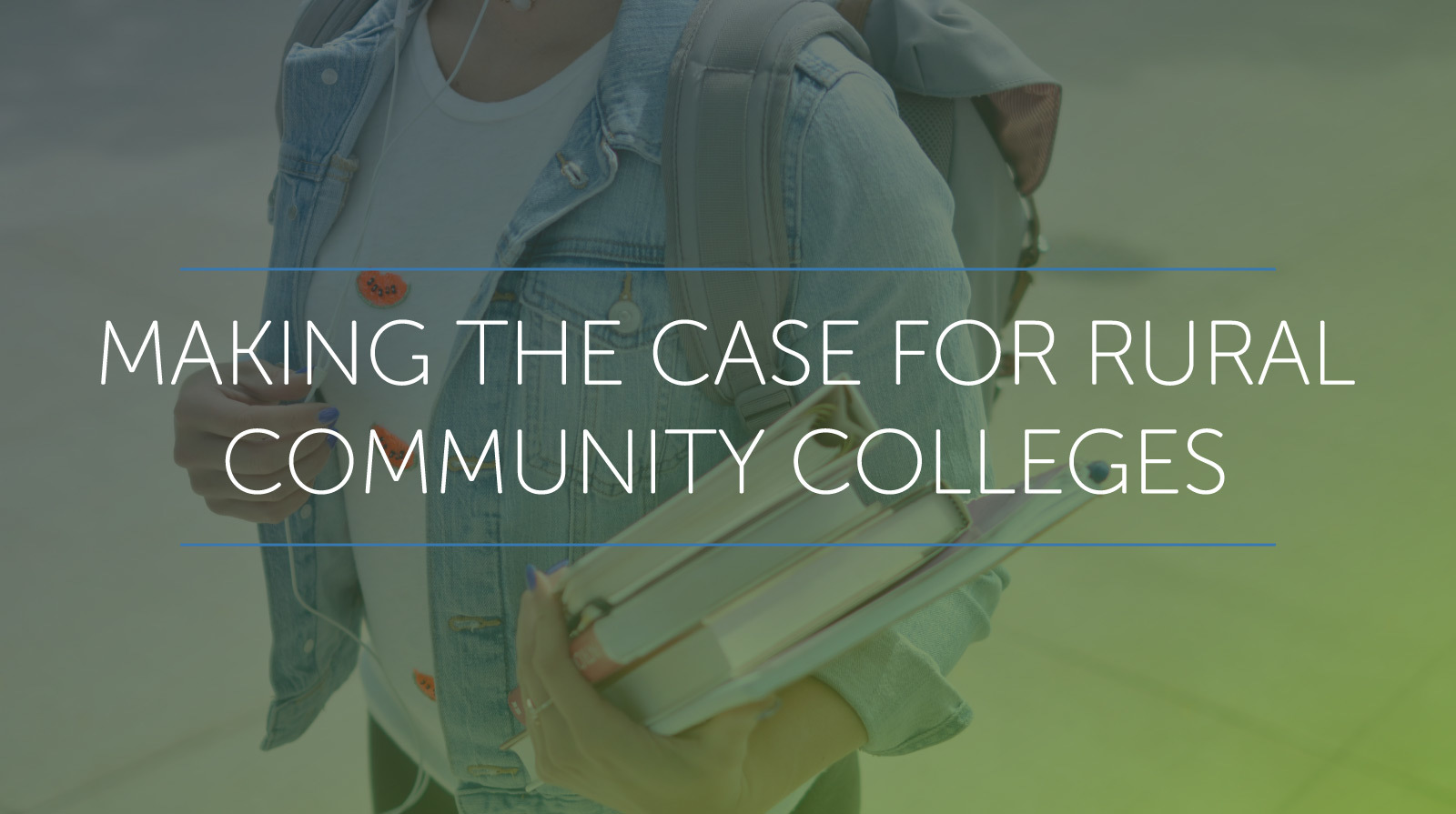Attracting and retaining rural community college students
Rural community college students face some unique challenges. They live in homes with less technology, commute long distances to school, and come from economically depressed communities (Garza & Eller, 1998). They are more likely to report having difficulty finding child-care or reliable transportation, or in obtaining financial aid (Bell, Rowen-Kenyon, & Perna, 2009). Often they are first generation students (Scott, Miller & Morris, 2015).
A particular hurdle for prospective college students in rural communities is a lack of guidance about the college process (McKinney and Novak, 2013). They have limited access to important information about the college, like admissions deadlines and financial aid opportunities.
Remedial education and rural community college students
One way that rural students can catch up with their peers is by taking remedial courses at a two-year public institution. However, the financial burden of remedial education falls most heavily on low-income college students, even though they paid less per course than their peers at four-year institutions.
According to the report Out of Pocket: The High Cost of Inadequate High Schools and High school Student Achievement on College Affordability, in the 2011-2012 school year the collective cost of these courses was nearly $1.5 billion. When public schools fail students, the cost of making them college-ready is only deferred.
Unfortunately, remedial courses rarely count towards a degree, making higher education take longer, and they negatively correlate with retention. Full-time community college students are 12 percent more likely to drop out after taking a remedial course.
Evening the odds: Supporting rural community college students
Overcoming all these issues that face rural students will require a multifaceted approach. However, starting with outreach and support services for students in remedial courses is a good place to begin. Improving persistence can be as simple as providing some extra encouragement.
Colleges can help in practical ways as well. Schools can provide wrap-around services to improve retention, like on-campus childcare, tutoring, and financial counseling. Some schools even offer an on-campus food bank. These kind of transition services improve outcomes for underprepared, low-income rural students.
Bridging the information gap
In the 2007-2008 school year about 42% of college students who were eligible to receive a Pell Grant didn’t even fill out a FAFSA (McKinney & Novak, 2013). Since prospective students in rural areas are less likely to have information about college enrollment or financial aid, community colleges must bridge the gap.
Most traditional advertising and marketing methods, like targeted ads, billboards, or TV spots will not make up for this lack of awareness. It’s impossible to attract prospective students in rural areas who don’t understand how to access the necessary support services to enroll in school.
Content marketing for rural community colleges
Rural community colleges can make a difference to their communities, which is why they must be able to provide clear, timely and relevant information about degree programs, financial aid, and enrollment deadlines. Rural students need information and assistance more than any other student demographic, and your marketing department can help.
With access to our deep content library, your marketing department can pull articles about issues relevant to their prospective students. You can share data-rich infographics, articles about employment trends, and helpful financial aid information. If you’re interested in seeing how this could help students at your rural community college, contact us for a demonstration today.
References
Bell, A. D., et. al. “College knowledge of 9th and 11th grade students: Variation by school and state context.” The Journal of Higher Education, 80 vol. 6, 2009, p. 663-685
Garza, H., et. al. “The role of rural community colleges in expanding access and economic development.” In McGrath, D. (Ed.), New Directions for Community Colleges, vol. 103, San Franscisco, CA: Jossey-Bass. 1998, p. 31-41
McKinney, L., Novak, H. “The relationship between FAFSA filing and persistence among first-year community college students.” Community College Review, 41 vol. 1, 2013, p. 63-85
Scott, Shanda, Michael Miller and Adam Morris. “Rural Community College Student Perceptions of Barriers to College Enrollment.” Academic Leadership Journal. vol. 3, 2015


